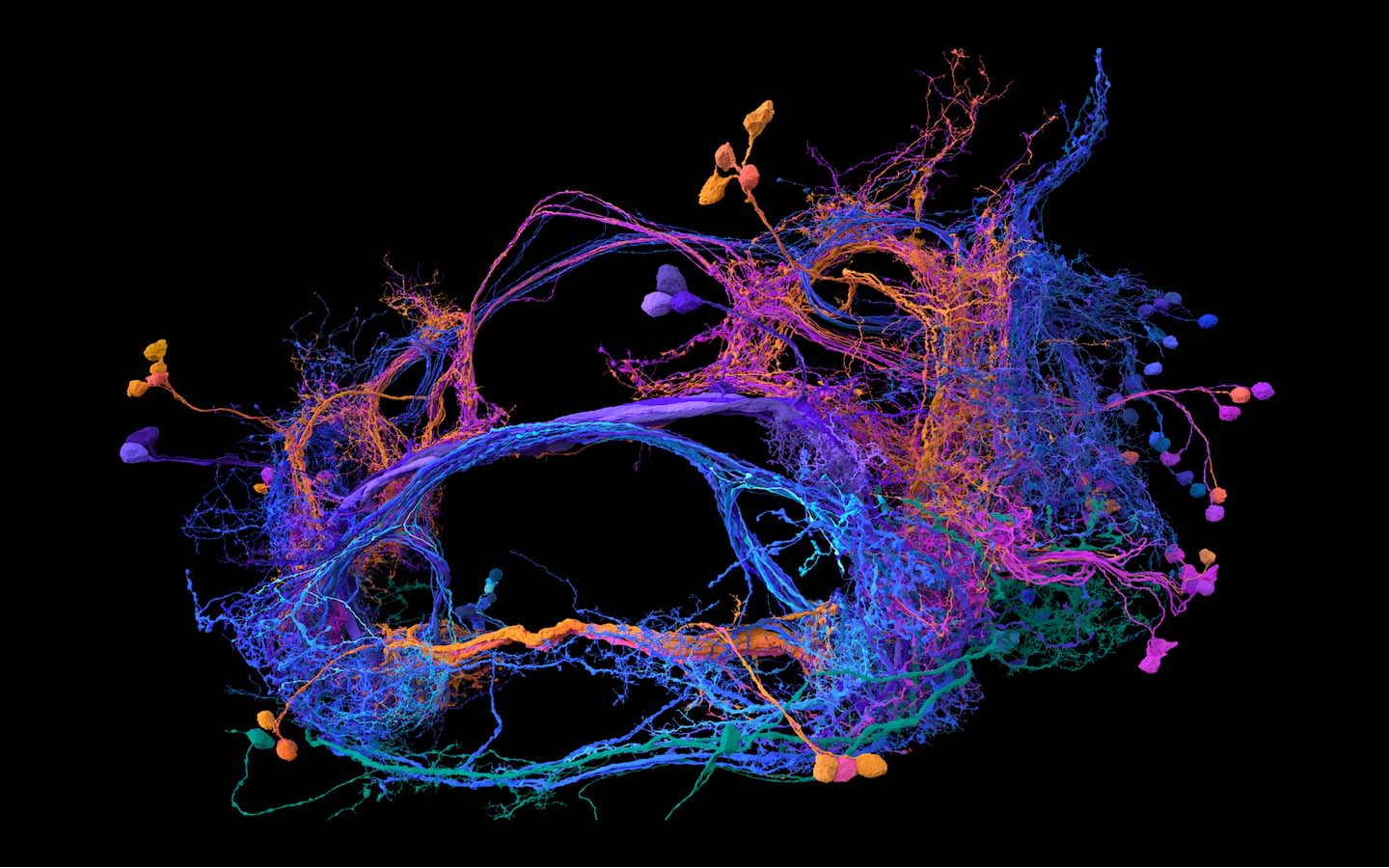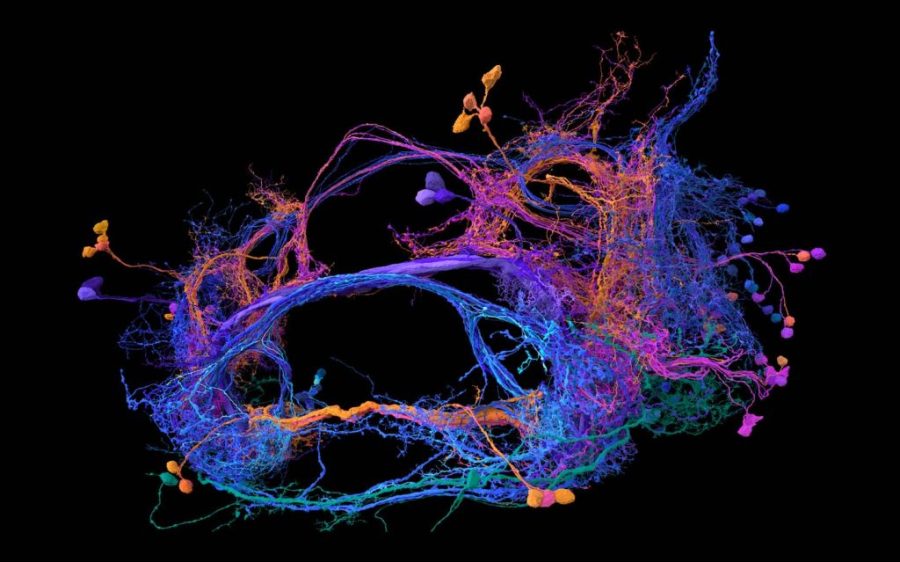A landmark wiring map of a single female fruit fly’s brain – the most complete for any organism so far – is fuelling a raft of new research, including a package of nine papers published this week in the journal Nature.
The wiring diagram (or connectome) of the fly’s brain includes nearly 140,000 neurons and captures more than 54.5 million synapses – the connections between nerve cells. According to neuroscientists Mala Murthy and Sebastian Seung of Princeton University, who together head the FlyWire consortium that developed the map, the process took more than four years and required a team of scientists, volunteers and sophisticated AI tools.
“This is a big deal,” Clay Reid, a neurobiologist at the Allen Institute for Brain Science in Seattle, Washington, told Nature. Reid, while not involved in developing the map, has worked with a member of the consortium before. “It’s something that the world has been anxiously waiting for, for a long time.”
[See more: Teenage girl’s brains aged faster during pandemic lockdowns than those of boys]
The team used AI to help them transform the data into a full map of the brain then began the long process of manually proofreading the data to address any errors produced by the AI. The task proved so daunting that they enlisted volunteers to help, making more than three million manual edits. Volunteers also helped with the process of annotating the map, labelling each neuron as a particular cell type.
In all, the team identified far more types of neurons than anyone expected – 8,453, of which 4,581 were newly discovered, opening up new paths for research. “Every one of those cell types is a question,” Seung told Nature. At least nine of those questions are now being explored in the prestigious journal, which recently published a raft of papers based on the FlyWire data map. One, for example, used the map to create a simulation that is more than 90 percent accurate at predicting which neurons would respond to sweet and bitter tastes and thus how a fly would behave.
Another compares the complete FlyWire connectome with its predecessor, a “hemibrain” map of a portion of a fly’s brain containing around 25,000 neurons, with striking results that may point to the impact of starvation on a fly’s developing brain. FlyWire is also keen to expand on its research, looking into the electrical connectivity between neurons, as well as creating another map – this time of a male fruit fly’s brain, looking into male-specific behaviours.






